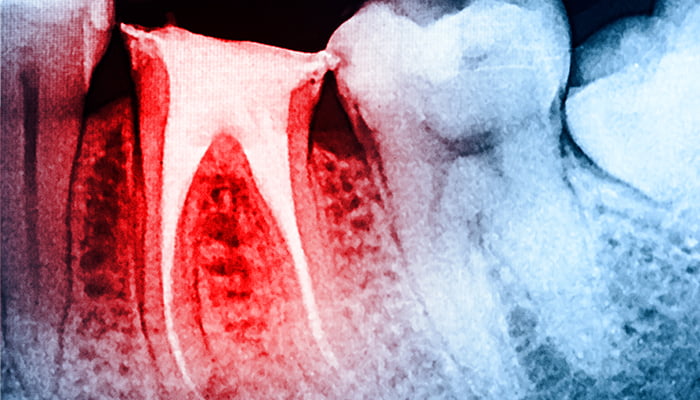Also sometimes referred to as the ‘dental pulp’ this is where the nerve supply is found, which means that infection found here can cause patients a lot of pain, sensitivity, and discomfort. Left untreated, this type of infection can also lead to abscesses, loose teeth, and even the loss of a tooth.
What happens during a root canal treatment?
First, we’ll use an anaesthetic to make sure you don’t feel anything at the area being treated, and that you’re comfortable throughout the treatment. We’ll then clean the root canals, removing any infection that is present and thoroughly disinfecting the tooth. To prevent infection from happening again, we’ll then fill in the tooth, applying a rubber-type material.
Will it hurt?
We understand that root canal treatments can be a scary prospect for nervous patients, and that they have something of a negative reputation. However, thanks to modern techniques and technologies, along with our highly skilled and gentle team, root canal treatments at The York Dental Suite are nothing to be frightened of. We’ll administer a local anaesthetic during the treatment, so you won’t feel anything while we treat you. You should expect to experience some pain and discomfort in the area once you’re home and the anaesthetic has worn off, but this can normally be treated with over the counter pain killers.
How many appointments will it take?
Most root canal treatments can be performed in just one appointment. If the infection is severe and the procedure therefore more complicated, we may need you to come in for up to three appointments.
Will I need a crown?
We often place a crown to further protect the tooth and ensure full function has been restored after the root canal treatment has been performed. This depends on the extent and size of your filling, your bite and any damage done to the tooth and is determined on an individual basis.
Are there any alternative treatments available?
The only alternative to receiving a root canal treatment is extraction of the tooth. This could lead to difficulty chewing, speaking, and eating, as well as changes to the facial structure, loss of bone in the jaw, and misalignment of the teeth.
